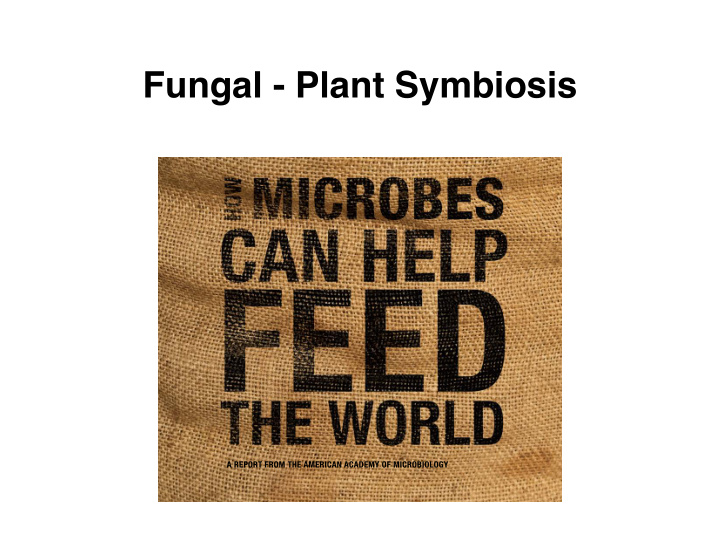



Fungal - Plant Symbiosis A REPORT FROM THE AMERICAN ACADEMY OF MICROBIOLOGY
Pius Florus is using a mix of microbes and organic pesticides to help restore a depleted field in Spain. Science 349:680 2015
The major root symbioses established by land plants with soil microorganisms are arbuscular mycorrhizal, ectomycorrhizal, and nitrogen-fixing associations. Francis M. Martin et al. Science 2017;356:eaad4501 Published by AAAS
Rhizobiome Group Genes #s/gm soil Plants 37,500 - Nematodes 18,000 10 - 100 15,500 100,000 - 1 million Protozoa Algae 13,000 1,000 - 1 million Fungi 1,400 1,000 - 100,000 Bacteria 6,500 100 million -1 billion Archaea 1300 10 million -100 million 45 10 million - 1 billion Viruses Science 349:680 2015
Fig. 2 modes of root entry by symbiotic soil microbes. Francis M. Martin et al. Science 2017;356:eaad4501 Published by AAAS
How Microbes Help Plants • Heat stress • Cold stress • Drought • Flooding • Osmotic stress • Pathogens • Insects • Heavy metal toxicity • Nutrient limitation DROUGHT How microbes can help feed the world, National Academy of Microbiologists
Dr. David Johnson New Mexico State University, Institute of Sustainable Agricultural Research 0.31 1.01 1.72 2.67 3.93 4.92 Beginning Soil C (%) r 2 = 0.99 New Mexico State University David C. Johnson- NMSU Institute for Sustainable Agricultural Research (ISAR) davidcjohnson@nmsu.edu
Dr. David Johnson New Mexico State University, Institute of Sustainable Agricultural Research Fungal:Bacterial New Mexico State University David C. Johnson- NMSU Institute for Sustainable Agricultural Research (ISAR) davidcjohnson@nmsu.edu
Dr. David Johnson New Mexico State University, Institute of Sustainable Agricultural Research New Mexico State University David C. Johnson- NMSU Institute for Sustainable Agricultural Research (ISAR) davidcjohnson@nmsu.edu
Recommend
More recommend